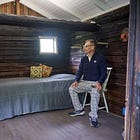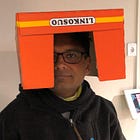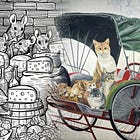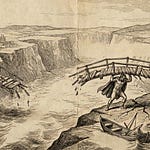When I was growing up in the 1980s in Hong Kong, we only had four television channels. Of these, two were in English—ATV and TVB. My father refused to buy a VHS player, his reasoning being that I would spend too much time watching TV. To this day, I think it was because he was burned by VHS beating Betamax. As with every kid in my generation, I was glued to the TV at certain times of the day. There were Saturday morning cartoons, Sesame Street every weekday afternoon, and the famous syndicated Disney hour on Sunday evenings.
Without modern conveniences like YouTube, if you missed an episode during a long and arduous season of 25 episodes, your only hope was to watch it on videotape or wait for reruns. There was also the infamous “cheater” episode that many shows of that era created. Picture this: It’s episode 18 of a Golden Girls season in the 1980s. Dorothy, Rose, Blanche, and Sophia are sitting around the kitchen table. Sophia brings up some ridiculous premise about her flight from Sicily, and therein ensues an episode made of clips from previous episodes. This is a “cheater” episode—no new footage, cheaper production costs, and some ridiculous framing device for the clips.
As I grew older, I noted that almost all the TV shows used this gimmick at some point in the season. There were comedy shows that I watched with my parents, like The Golden Girls and The Cosby Show, while others were more aimed at me, like MacGyver, The A-Team, Riptide, and Hardcastle and McCormick, to name a few. Television in Hong Kong in the 80s was a mix of American and British. I don’t remember if television shows from Canada, Australia, or the UK used this storytelling mechanism.
I do recall watching Neighbours, for example. This came on every afternoon, and I remember watching youngsters Kylie Minogue and Jason Donovan very clearly before their music careers. Canadians would be surprised to learn that The Beachcombers would air on lazy Sunday afternoons, usually after televised lawn bowling, and someone will have to write in and tell me whether that show had such episodes. I sincerely doubt that many Hong Kong people could make head or tail of what was happening in Molly’s Reach. It’s probably unsurprising that what I remember most about The Beachcombers growing up is a comedy skit show in Hong Kong making fun of it.
So for this “cheater” episode for Tales Under the Cat Tree, I will use the framing device of what it has taken to put out a weekly podcast of roughly 20 minutes by myself. After all, this was something I had never done before. Initially, my plan was 20 episodes in total, so, with this episode, I am considering this my first season, done and dusted. In listening to this you may get some ideas if you are considering having a podcast yourself. At the end I will talk about what’s next!
Recording a Podcast
Microphone Arm: Rode PSA 1+ microphone arm
Microphone: Shure MV6 USB-C microphone.
A very good microphone I could not use: a Rode NT 1 Condenser mic.
Mentioned:
Coming Up with a Theme Song
Audio effects: Artlist.
Mentioned:
Interviewing for a Podcast
Interviews: Riverside.FM.
Audio editing: Audacity
Audio AI: Auphonic
Wireless Mics: Rode Wireless Micro
Mentioned
Use of AI in Tales Under the Cat Tree
Other editing tools: Adobe Podcast.
Transcription: MacWhisper whisper.cpp
The Future of Tales Under the Cat Tree
At the end of 21 episodes, which is about the same number as a season of 80s television, I need to look forward to Season 2. I didn’t know what I wanted out of this podcast, and it shows. I’ve experimented with themes, structures, publishing times, and formats. The criticism I’ve received reflects the same: you don’t know what to expect, and I don’t have a format to stick to.
Going forward each week, I will pair bigger topics with a compelling piece of fiction or autobiography. I sincerely believe that stories provide a lens into capturing and understanding any topic—whether history, technology, or business—by connecting personal narratives to the wider picture. This means more episodes such as Episode 10, where I wrote a story called “To the lands of milk and honey” to illustrate management styles, or Episode 15, “From Russia Without Love,” which had a story about Stalinist purges by Dr. Erwin Warkentin followed by an interview. This means more original writing and biography, paired with interviews and topics around an episode theme.
Thank you to everyone who has helped me thus far, you are too numerous to name. I hope you will join me or stay with me on this journey. In fact, I hope you will contribute. Everyone has or knows someone with a story.





















